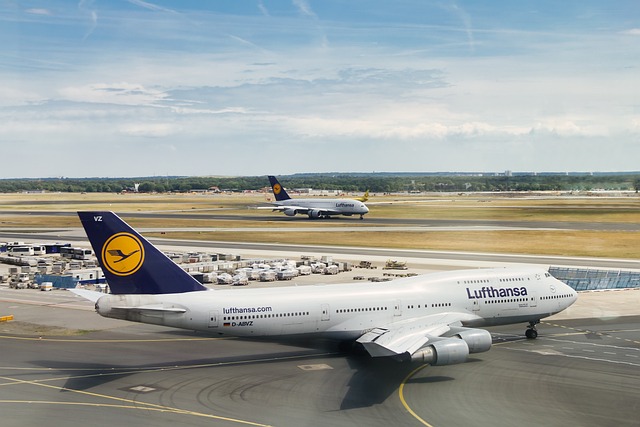How to Get Elite Status Without Flying Much

Frequent flyer programs are designed to reward loyal travelers with perks like priority boarding, lounge access, free upgrades, and bonus miles. However, achieving elite status typically requires flying a significant number of miles or segments each year—something that isn’t feasible for everyone. Fortunately, there are strategies to earn elite status without spending countless hours in the air. In this guide, we’ll explore how you can leverage credit cards, airline partnerships, promotions, and other tactics to achieve elite status without flying much.
Why Pursue Elite Status?
Before diving into the strategies, let’s briefly discuss why elite status is worth pursuing. Elite status offers a range of benefits, including:
- Priority Check-In and Boarding: Skip long lines and board earlier to secure overhead bin space.
- Lounge Access: Enjoy complimentary access to airport lounges, where you can relax in comfort before your flight.
- Free Upgrades: Elite members often receive complimentary upgrades to premium cabins when available.
- Bonus Miles: Earn additional frequent flyer miles on every flight.
- Waived Fees: Avoid fees for things like ticket changes, baggage, and seat selection.
While these perks are traditionally earned by frequent flyers, you don’t need to be a road warrior to enjoy them. Here’s how you can achieve elite status without flying much.
1. Use Airline Credit Cards
One of the easiest ways to earn elite status without flying is through co-branded airline credit cards. Many airlines offer credit cards that provide shortcuts to elite status, either by granting automatic status or allowing you to earn qualifying miles through everyday spending.
Examples:
- Delta SkyMiles Reserve American Express Card: This card grants Delta Medallion Silver status (the lowest tier) automatically. Additionally, you can earn Medallion Qualification Miles (MQMs) based on your spending.
- United Club Infinite Card: Spend $15,000 annually on the card, and you’ll earn 5,000 Premier Qualifying Points (PQPs), which count toward United’s MileagePlus elite status.
- American Airlines AAdvantage Aviator Red World Elite Mastercard: This card offers AAdvantage Gold status after spending $20,000 in a calendar year.
Tips:
- Choose a card that aligns with your preferred airline alliance (e.g., Star Alliance, Oneworld, SkyTeam).
- Maximize your spending on the card to meet thresholds for earning status-qualifying points or miles.
- Take advantage of sign-up bonuses, which often include extra miles or points that contribute to elite status.
2. Leverage Airline Partnerships
Most major airlines are part of global alliances like Star Alliance, Oneworld, and SkyTeam. These alliances allow you to earn and redeem miles across partner airlines, making it easier to achieve elite status without flying directly with your home airline.
Strategies:
- Fly Partner Airlines: Instead of flying your home airline, book flights with partner carriers that count toward your elite status. For example, if you’re pursuing United elite status, you can fly Lufthansa or ANA and still earn PQPs.
- Transfer Points: Many loyalty programs allow you to transfer points from hotel or credit card programs into airline miles. For instance, Chase Ultimate Rewards points can be transferred to United MileagePlus or British Airways Executive Club.
- Hotel Stays: Some hotel loyalty programs, like Marriott Bonvoy, have partnerships with airlines that allow you to convert hotel points into airline miles.
Example:
If you’re aiming for American Airlines AAdvantage Platinum status, you could fly British Airways (a Oneworld partner) and still earn elite-qualifying miles.
3. Take Advantage of Promotions
Airlines frequently run promotions that make it easier to earn elite status. These promotions may include discounted pricing on elite-qualifying miles, bonus miles for specific activities, or reduced requirements for achieving status.
Common Promotions:
- Status Challenges: Some airlines offer “status challenges,” where you can earn elite status by completing a certain number of flights or earning a set number of miles within a short period.
- Mileage Buy/Transfer Bonuses: Airlines often run promotions where you can purchase or transfer miles at a discount, which can help you reach elite status faster.
- Bonus Miles for Non-Flight Activities: Activities like dining through an airline’s dining program, shopping through their online portal, or using their co-branded credit card can earn you extra miles.
Example:
Delta occasionally runs promotions where you can earn up to 20,000 MQMs by spending a certain amount on their credit card or booking hotels through their portal.
4. Combine Flights with Other Activities
If you do fly occasionally, maximize the value of those flights by combining them with other activities that earn elite-qualifying miles.
Strategies:
- Book Through Corporate Travel Programs: If you travel for work, ensure your company books flights through corporate programs that allow you to earn miles.
- Fly During Peak Seasons: Airlines often award more elite-qualifying miles during peak travel seasons or on international routes.
- Upgrade to Premium Cabins: Booking business or first-class tickets often earns you more elite-qualifying miles than economy fares.
Example:
A single round-trip business-class flight from New York to London could earn enough elite-qualifying miles to push you closer to mid-tier status.
5. Join Match-and-Status Programs
Many airlines offer “status match” programs, where they grant temporary elite status to members of competing airlines’ loyalty programs. This is an excellent way to test-drive elite status and potentially retain it by meeting lower requirements.
How It Works:
- Submit proof of your current elite status with another airline.
- The new airline will grant you temporary status (usually three months).
- During this period, you must complete a set number of flights or earn a certain number of miles to retain the status permanently.
Examples:
- Alaska Airlines MVP Status Match: Alaska offers matches for elite members of Delta, American, and United.
- JetBlue Mosaic Status Match: JetBlue allows matches from other airlines, including Southwest and Hawaiian Airlines.
Tip:
Even if you don’t currently have elite status, some airlines will consider matching non-airline loyalty programs, such as hotel or rental car elite tiers.
6. Use Family or Friends’ Accounts
If you frequently travel with family or friends who have elite status, you can sometimes piggyback off their benefits.
Strategies:
- Companion Certificates: Many elite-status credit cards offer companion tickets, which allow you to book discounted or free tickets for a traveling companion.
- Shared Benefits: Some airlines extend lounge access and priority boarding to companions traveling with an elite member.
- Pool Miles: If your airline allows family pooling of miles, you can combine miles from multiple accounts to reach elite status faster.
Example:
If your spouse has Delta Diamond Medallion status, you can enjoy complimentary upgrades and lounge access when traveling together.
7. Consider Low-Cost Carriers with Elite Programs
Not all elite-status programs require extensive travel. Some low-cost carriers, like Southwest Airlines and JetBlue, offer attainable elite tiers with relatively low thresholds.
Examples:
- Southwest A-List: You only need to fly 25 one-way flights or earn 35,000 tier-qualifying points to achieve A-List status.
- JetBlue Mosaic: Earning 15,000 base flight points or taking 30 flights in a calendar year qualifies you for Mosaic status.
Tip:
These programs are ideal for occasional travelers who want to enjoy perks like free checked bags, early boarding, and waived change fees.




